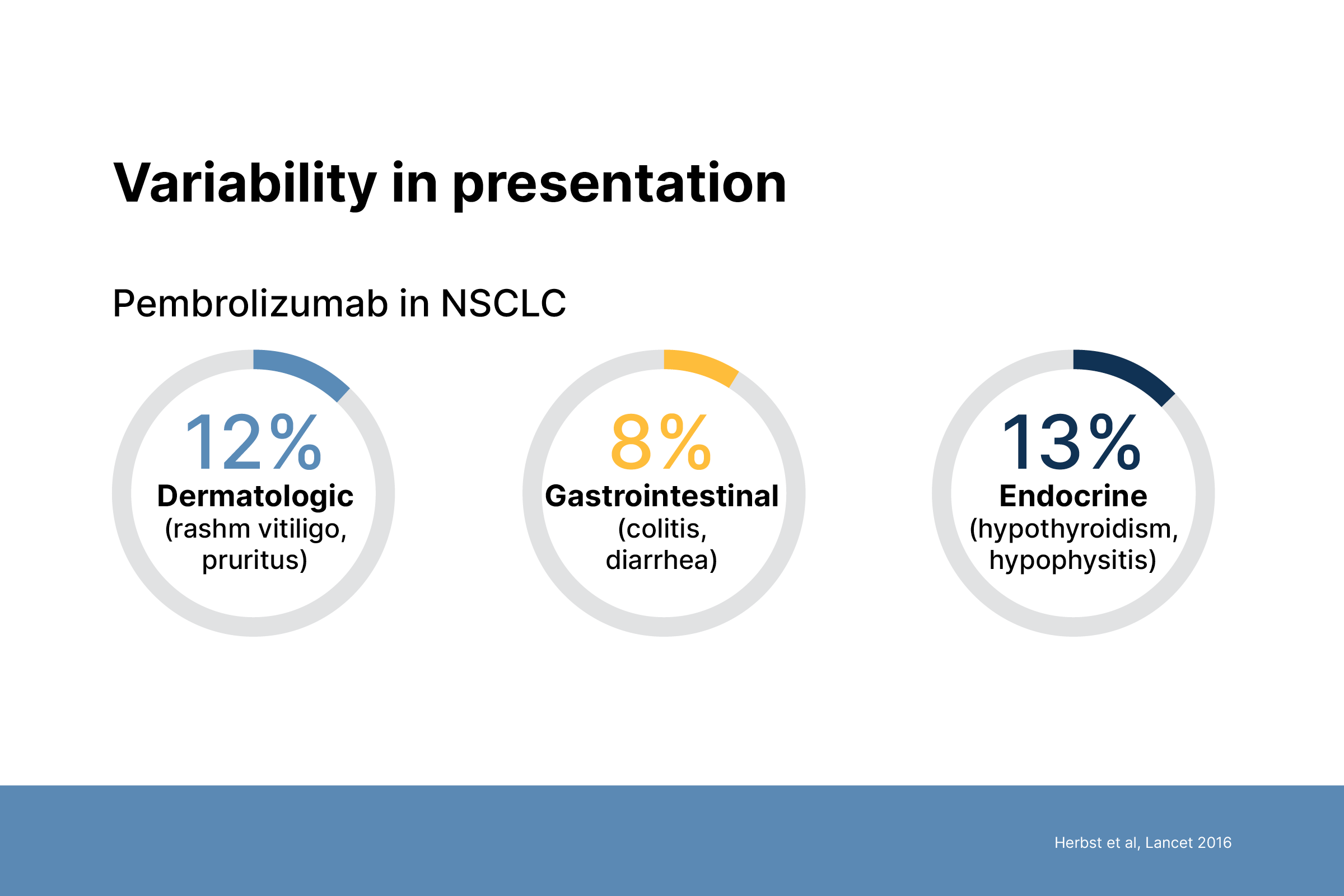Bringing Research from Bench to Bedside
Steven T. Chen, MD, MPH, MS-HPEd, Assistant Professor of Dermatology, Harvard Medical School, Vice Chief of Education, Department of Dermatology, Associate Program Director, MGH, Harvard Dermatology Residency Program Co-Director, Comprehensive Cutaneous Lymphoma Program, MGH Cancer Center
December 2022
Dr. Chen presented on dermatologic immune-related adverse events (D-irAEs) and the role of dermatology specialists in the care of patients who are treated with immune checkpoint inhibitors (ICIs).
ICIs are a relatively new oncology medication class that blocks immune checkpoints for specific antigen-targeted cancer destruction. The four classes of ICIs include anti-CTLA-4 (e.g., ipilimumab, tremilimumab), anti-PDL-1 (e.g., atezolizumab, avelumab, durvalumab), anti-PD-1 (e.g., nivolumab, pembrolizumab, cemiplimab), and the newest class, anti-Lag3 (relatlimab). Any organ system can be affected by irAEs.
In clinical trials, patients with melanoma who received ipilimumab experienced more dermatologic adverse events compared with patients with non-small cell lung cancer (NSCLC) who received pembrolizumab. Occurrence rates of D-irAEs change based on ICI class and tumor type. Patients treated with anti-CTLA-4s have more D-irAEs, and melanoma patients have higher D-irAE rates than do those with other cancers.
Dr. Chen presented three dermatological cases of cancer patients treated with ICIs. His key takeaway message was that dermatologists can make a difference in the cancer patient’s quality of life, morbidity, and mortality.
In an outpatient study, cancer patients treated in dermatology clinic for irAEs had improved progression-free survival and overall survival. These patients had higher-severity D-irAE, which usually are correlated with worse survival, but showed improvement after dermatology treatment. Given the improvement in survival with supportive dermatologic care, this mimics previously published data related to early palliative care improving survival in cancer patients.
In summary, a tidal wave of ICI toxicities is occurring. Dr. Chen encouraged dermatologists to make a difference in treating D-irAEs of cancer patients by looking for specific morphologic diagnoses and considering skin biopsy because the underlying histopathologic process of D-irAEs may be different than what is at first clinically suggested. This may in turn affect how one decides to treat the patient.


